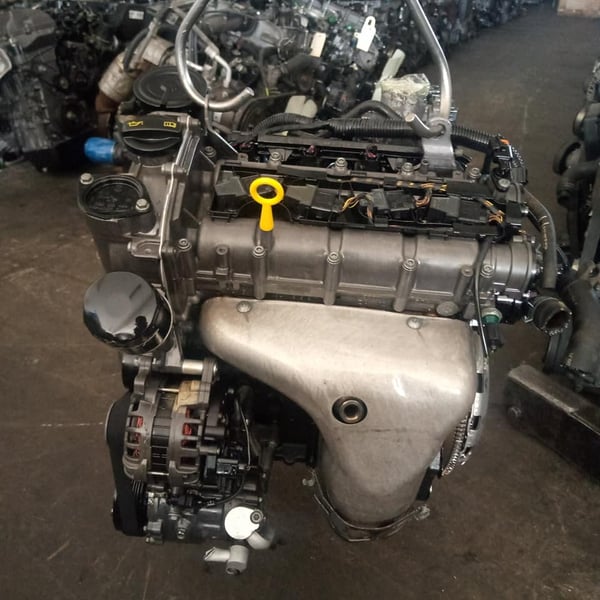Reduce maintenance costs with a well-built clp engine.
Reduce maintenance costs with a well-built clp engine.
Blog Article
How a Clp Engine Can Enhance Efficiency in Different Industries
The arrival of CLP engines notes a considerable change in functional efficiency throughout different industries, driven by their capacity to enhance gas consumption and lessen downtime. Industries such as manufacturing and logistics stand to get substantially from their robust layout and constant power output, which guarantee to improve operations and improve productivity. As companies progressively focus on sustainability along with efficiency, the duty of CLP engines comes to be also more vital. What remains to be seen is exactly how these advancements will form the future landscape of industrial procedures and their influence on broader economic trends (clp engine).
Summary of CLP Engines
CLP engines, or Continuous Liquid Propellant engines, represent a considerable improvement in propulsion innovation, particularly for room applications. These engines make use of a constant feed system that enables the continual expulsion of propellant, causing enhanced performance and efficiency contrasted to standard strong or hybrid propulsion systems. By preserving a consistent circulation of liquid propellant, CLP engines can attain a lot more accurate thrust control, which is essential for navigating spacecraft in various objective situations.
The style of CLP engines integrates advanced products and innovative gas administration systems. clp engine. This results in minimized weight and increased integrity, vital factors for long-duration area missions. The continual operation decreases the risk of burning instability, a common difficulty in standard rocket engines.

Advantages in Production
The production of Continual Fluid Propellant (CLP) engines offers several noteworthy benefits that improve both effectiveness and cost-effectiveness. One of the main advantages is the structured manufacturing procedure, which minimizes the complexity connected with conventional propulsion systems. By using fluid propellant, suppliers can achieve greater precision in engine performance, causing enhanced power result and lowered waste.
In addition, CLP engines facilitate a higher level of modularity, allowing for less complicated integration right into numerous manufacturing lines. This versatility can considerably reduce lead times and improve total operational flexibility. Using CLP modern technology additionally tends to minimize the need for comprehensive maintenance because of fewer moving parts, which converts right into decreased downtime and operational prices.

Applications in Logistics
Leveraging Continual Fluid Propellant (CLP) engines in logistics provides substantial advantages in operational performance and integrity. These engines provide a robust option for various transportation demands, making it possible for the seamless motion of items across large distances. The intrinsic layout of CLP engines enables for regular power outcome, which converts right into smoother and much more foreseeable transport schedules.
One of the key applications of CLP engines in logistics is in heavy-duty freight transportation, where they can drive both ground and airborne vehicles. Their capacity to keep high performance under differing lots problems makes certain that delivery timelines are met, thus improving customer contentment. In addition, CLP engines can be integrated into automated logistics systems, helping with real-time tracking and optimizing course preparation.
Furthermore, the toughness of CLP engines decreases maintenance downtime, enabling logistics companies to optimize their functional capacities. This is especially beneficial in warehousing procedures, where effectiveness in handling and delivering goods is critical. As logistics proceeds to evolve, the assimilation of CLP engines represents a forward-thinking strategy that not only boosts performance yet likewise sustains the market's expanding needs for reliability and rate.
Effect On Power Efficiency
Just How do Continuous Fluid Propellant (CLP) engines enhance energy efficiency in transport? CLP engines utilize a regular flow you can find out more of fluid fuel, enhancing burning click site processes and maintaining a steady thrust result. This design decreases energy losses related to standard burning engines, where fuel distribution can vary and lead to inadequacies.
The continual operation of CLP engines permits a more efficient thermal cycle, leading to greater certain impulse contrasted to conventional engines. clp engine. This converts to reduced fuel usage for the same amount of job done, significantly reducing functional prices throughout various transportation markets, consisting of aviation and maritime industries
Additionally, the capacity of CLP engines to maintain optimal performance under varying tons problems lowers the need for frequent acceleration and deceleration, additionally improving gas performance. Boosted power performance not just adds to set you back savings but also results in lower greenhouse gas emissions, lining up with worldwide sustainability goals.
Future Trends and Innovations
Emerging developments in Continuous Liquid Propellant (CLP) engine modern technology promise to revolutionize the landscape of transportation efficiency and sustainability. As sectors pivot towards greener options, CLP engines stand at the leading edge, integrating innovative products and layout techniques that improve performance while reducing environmental impact.
Among one of the most encouraging fads is the adoption of hybrid systems that combine CLP engines with eco-friendly power sources. This synergy can maximize gas usage and decrease emissions, straightening with worldwide sustainability goals. In addition, improvements in computational fluid characteristics (CFD) are promoting the layout of even more aerodynamically effective engines, leading to reduced drag and boosted gas efficiency.
Additionally, the advancement of smart surveillance systems is set to boost operational performances. These systems take advantage of information analytics and IoT innovation to maximize engine performance in real-time, making sure that the engines operate within their most effective criteria.
As research study proceeds to explore alternate propellant solutions-- such as biofuels and synthetic fuels-- the future of CLP engines looks encouraging. By utilizing these technologies, industries can not only boost their efficiency however additionally contribute substantially to a cleaner, extra sustainable future in transportation.
Verdict
In conclusion, CLP engines represent a considerable innovation in efficiency across multiple industries. The integration of advanced materials and fewer moving parts reduces maintenance demands, while positioning with sustainability you can try these out objectives placements CLP engines as a crucial technology for the future.
Report this page